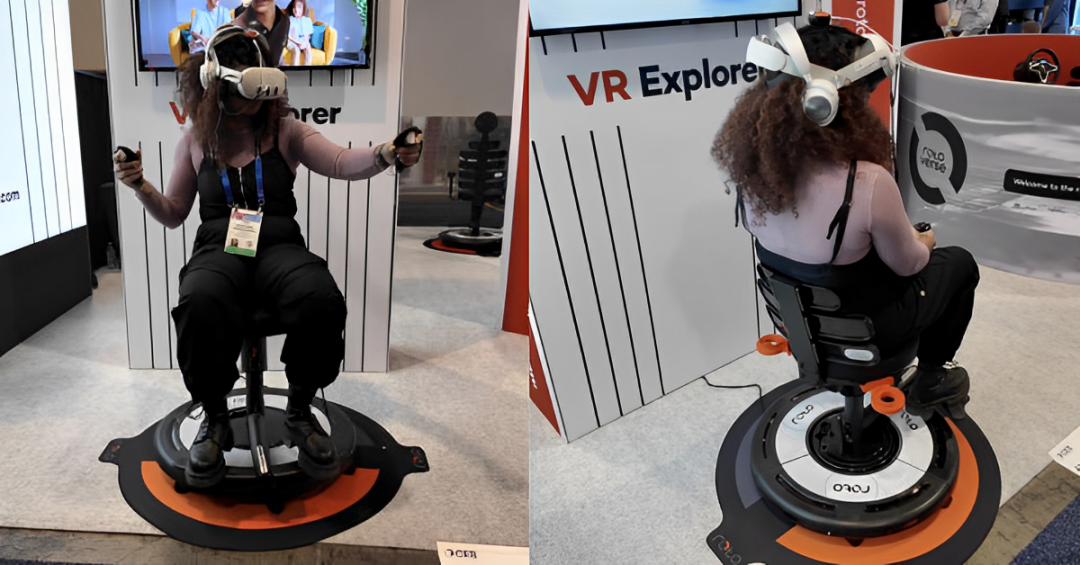A spinning VR gaming chair sounds like it would be a nightmare for your stomach. Virtual reality alone can already make some people feel queasy, and when you add full-body rotation, it seems like it could only make the situation worse. I was honestly preparing for the worst when I tried out the $800 Roto VR Explorer at CES 2025.
This chair uses a head-tracker that attaches to devices like the Meta Quest headsets to make the chair swivel in whatever direction you’re looking. But, surprisingly, I had a pretty good time with it.
The chair is designed to improve the seated VR gaming experience and actually help reduce motion sickness. According to the press materials, it works by syncing the signals from your inner ear with the visual cues your brain is expecting. Even though I was curious, I was still a little nervous. As we approached the booth, the first thing I saw was the chair spinning all by itself in the corner, like it was trying to warn me.
The Roto VR Explorer is made for Meta devices, particularly the Quest. Still, it’s also compatible with other standalone headsets like the HTC Vive family and, soon, the Apple Vision Pro.
The chair is pretty solid, weighing 66 pounds, so it felt very stable when I sat in it. There’s a rumble pack under the seat that adds haptic feedback, so your whole body feels the action, not just your hands through the controllers. The head tracker, which looks like a flat Poké Ball, clips onto the top strap of the headset.
After the Roto team showed me how it worked and got me settled into the chair with a Quest 3 headset, I picked my VR experience — the interactive documentary Spheres, which came out in 2018. The first few moments felt a bit odd. As I turned my head to follow the glowing auroras, my body rotated, almost like I was a spice jar on a lazy Susan.
But after a minute or so, I stopped focusing on the movement and just went with the flow. The experience was definitely more comfortable than I had imagined, although the crowded show floor did cause some lag, which led to a few jerky movements.
For something like Spheres, where you slowly move through stunning visuals and interact with the environment, the Roto VR Explorer was actually quite enjoyable. However, in a fast-paced game like a first-person shooter, the chair would probably add to the tension.
I tried moving my head back and forth quickly just to test the chair’s response, and when it was working smoothly, it was surprisingly fast. The chair can spin at a maximum speed of 21 revolutions per minute, but you can slow it down with the controllers if that feels too intense.
I thought I would be taking deep breaths throughout the demo, but there was never a point where I felt nauseous. When I got up from the chair and removed the headset, I didn’t feel any more dizzy or unsteady than I normally do after using VR. Of course, using the chair for a long time might lead to some discomfort, but for the short time I was on it, I was just relieved I didn’t embarrass myself in front of strangers.
There are definitely situations where you might want to do VR gaming sitting down, and the Roto VR Explorer makes it a much more immersive experience. It’s available for purchase right now, and there will be upgrade packages — like Pro Flying and Pro Racing — coming in August 2025.
Note: Every piece of content is rigorously reviewed by our team of experienced writers and editors to ensure its accuracy. Our writers use credible sources and adhere to strict fact-checking protocols to verify all claims and data before publication. If an error is identified, we promptly correct it and strive for transparency in all updates.







Leave a Comment